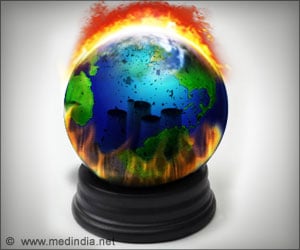Humidity is likely to increase the threat to human health from climate change-related temperature hikes in certain parts of the world.

‘By the 2070s, high wet-bulb readings that now occur maybe only once a year could prevail 100 to 250 days of the year in some parts of the tropics.’





While hundreds of millions of people would suffer worldwide, the hardest-hit area in terms of human impact, will probably be densely populated northeastern India, the research team said. "The conditions we're talking about basically never occur now -- people in most places have never experienced them," said lead author Ethan Coffel of Columbia University in New York.
Detecting Future Temperature
Using global climate models, the researchers mapped current and projected future "wet bulb" temperatures, which reflect the combined effects of heat and humidity.
The measurement is made by draping a water-saturated cloth over the bulb of a conventional thermometer. The study found that by the 2070s, high wet-bulb readings that now occur maybe only once a year could prevail 100 to 250 days of the year in some parts of the tropics.
Advertisement
"Lots of people would crumble well before you reach wet-bulb temperatures of 32 C, or anything close," said coauthor Radley Horton, a climate scientist at Columbia University's Lamont-Doherty Earth Observatory.
Advertisement
Other areas which are likely to bear the brunt of the crusing combination of heat and humidity include the southeastern US, the Amazon, western and central Africa, the Arabian peninsula and eastern China.
According to background information in the report: "Human health impacts depend on both temperature and humidity. The human body is efficient at shedding heat through evaporative cooling [sweating], even in high air temperatures, if moisture levels are low.
"However, in hot and humid conditions, the efficiency of evaporative cooling slows and the body may become unable to maintain a stable core temperature," the study authors wrote. This can cause heat stress, which can lead to heat stroke, heat exhaustion, heat cramps or heat rashes.
Study co-author Alex deSherbinin, of Columbia's Center for International Earth Science Information Network, added that "it's not just about the heat, or the number of people. It's about how many people are poor, how many are old, who has to go outside to work, who has air conditioning."
Source-Medindia









